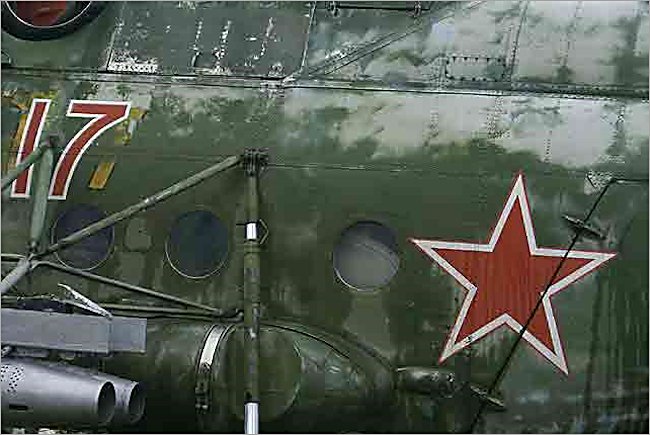Mil Mi-8 Hip Helicopter
Designed originally in the 196,0 the Mil Mi-8 Hip is a general purpose medium lift twin-turbine transport helicopter that can also act as a gunship. The Mi-8 is used by over 50 countries. Russia is the largest operator of the Mi-8 helicopter. NATO maintained its habit of assigning Soviet fighters with F based names, bombers with B names and H based names for helicopters. This is why the Mi-8 has the reporting name of Hip.
The Mil Mi-8 Hip helicopter had a crew of three; pilot, copilot and flight engineer. It could carry 24 passengers or 12 stretchers and a seat for one medic. It can also carry up to 1,500 kg (3,300 lb) of disposable stores on six hardpoints, including 57 mm S-5 rockets, bombs, or 9M17 Phalanga Anti Tank Guided Missiles . It was powered by two Klimov TV3-117Mt turboshafts, 1,454 kW (1,950 shp) each. The Mil Mi-8 Hip helicopter had a maximum speed of 260 km/h (161mph) and a range of 450 km (280 mi). Its service ceiling was 4,500 m (14,765 ft).

Photograph taken at the Russian Aircraft Museum next to Riga International Airport Latvia
The Mil Mi-8 helicopter was intended primarily for Aeroflot and had seating accommodation for up to 28 passengers in its standard airline form. Alternative internal arrangements include a de luxe saloon cabin for executive travel or a cargo layout for an internal payload of 4000kg.

Photograph taken at the Russian Aircraft Museum next to Riga International Airport Latvia
Emergency conversion of the cargo model to a passenger carrier can be carried out quickly by installing 24 tip-up seats along the cabin sides. Clamshell rear doors are provided for loading large items of cargo or, in the ambulance role, 12 stretchers which can be carried with an accompanying medical attendant.
Recent combat experience in Chechnya has led to a development with a night attack capability. This is equipped with a night vision goggles-compatible cockpit, forward-looking infra-red and laser rangefinder. Due to the fact that mine clearing of the Suez Canal was required to be done with helicopters, five Mi-8T were re-equipped in 1974 as Mi-8BT mine sweepers. Subsequently they were used as testing laboratories for sea equipment.